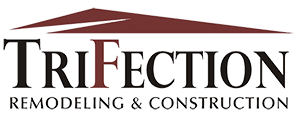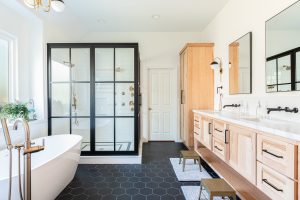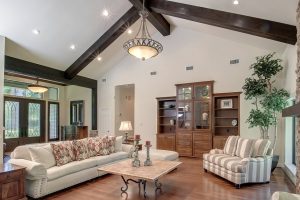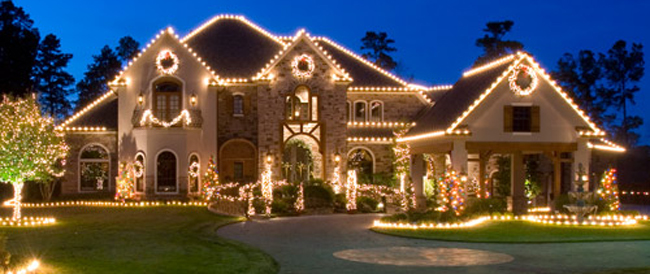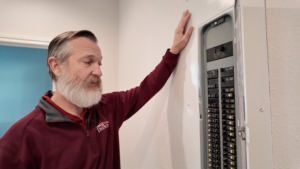The recent chilly temperatures in Houston have served notice that winter is upon us. You should determine if your home is truly ready for the challenges the season may bring. TriFection has provided a few helpful reminders that will help lower your energy bills, keep your family comfortable and prevent expensive repairs in the future in a “How to Winterize Your Home” checklist.
Check the Furnace
Start by turning the thermostat to heat mode and set it to 80 degrees for testing. You should hear the furnace kick on and feel warm air blowing within a few minutes. If it’s working ok, then return it to a normal setting. If something appears wrong, consult a qualified technician immediately. You should also replace any dirty filters, as necessary, to allow for unimpeded air flow. Lastly, particularly if you have a gas furnace, you should invest in a carbon monoxide detector.
Get Your Ducts in a Row
According to the U.S. Department of Energy, a home with central heating can lose up to 60% of its heated air before that air reaches the vents if ductwork is not well-connected and insulated, or if it must travel through unheated spaces. That means a large amount of wasted money and a chilly house! Repair places where pipes are pinched, which impedes flow of heated air to the house, and fix gaps with a metal-backed tape (duct tape typically doesn’t hold up over time).
Add Necessary Insulation
Poorly insulated attics allow expensive heated air to escape your home, wasting money and energy.  The proper insulation thickness depends on your chosen insulation material and recommended R-value for this area. However, a general rule of thumb is that you need a minimum 12 inches of insulation. If you can see the ceiling joists, you probably need to add insulation because a joist is no more than 10 or 11 inches.
The proper insulation thickness depends on your chosen insulation material and recommended R-value for this area. However, a general rule of thumb is that you need a minimum 12 inches of insulation. If you can see the ceiling joists, you probably need to add insulation because a joist is no more than 10 or 11 inches.
Keep Your Pipes from Freezing
A burst pipe caused by a winter freeze is every homeowner’s worst nightmare. Before a hard freeze hits, you should wrap your outside hose bibs, shut off the water and drain the lines. You should also wrap any pipes that are not insulated or pass through unheated spaces, such as garages or crawlspaces.
Seal the Leaks
One of the best ways you can winterize your home is to simply block leaks, both inside and outside the house. Studies have indicated that the average American home has leaks equivalent to a 9 square foot hole in the wall. First, you must find the leaks. On a windy day, walk around the inside of your house with a lit incense stick near most common drafty areas – doors, windows, recessed lighting, electrical outlets, etc. Then, buy door sweeps to close spaces under exterior doors and apply weather-resistant caulk and masonry sealer (for brick) to outside areas. Outlet gaskets can be installed in electrical outlets that share a home’s outer walls, where cold air often enters.
Check the Chimney
Before building that first cozy fire of the season, perform an adequate inspection of the chimney. Make sure it remains clear of foreign objects, such as tree branches, tennis balls, birds, nests, etc. Consider buying a protective cover if your chimney is not already equipped with one. You should also keep the damper closed when the fireplace is not in use to keep out the cold air.
Upgrade to energy-efficient windows
If you have an older home with outdated single-paned windows, 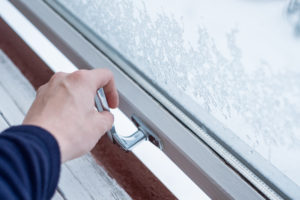 you should strongly consider an upgrade to modern, energy-efficient windows made specifically for the Gulf Coast climate. TriFection can install top-quality windows featuring low-E, Argon-filled double-paned glass that will serve your home (and your checkbook) very well in both winter and summer months.
you should strongly consider an upgrade to modern, energy-efficient windows made specifically for the Gulf Coast climate. TriFection can install top-quality windows featuring low-E, Argon-filled double-paned glass that will serve your home (and your checkbook) very well in both winter and summer months.
Clean the Gutters
Once the tree leaves have fallen, it’s a good idea to perform an annual cleaning of the gutters, including a good hose rinse. Clogged drains can create ice dams following rain and subsequent freeze. This can increase the probability of water leaking into your home and cause gutter damage. While cleaning, you should check for leaks and misaligned pipes to ensure proper drainage away from the foundation.
Call TriFection for Your Home Renovation Needs This Winter
TriFection is one of the top home remodeling businesses for Houston residents. If the change in temperature is making you consider a change in the look of your home, give TriFection a call at 281-548-2436 to get started on your home renovation!
